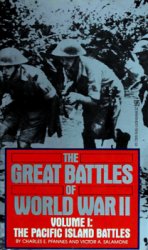Between 1900 and 1930, political life in the United States underwent a significant transformation. The character of the electorate, the rules and procedures for elections, and the way in which parties and politics were organized all changed. While electoral politics continued to be dominated by the Democratic Party and the Republican Party, the emergence of lobbying and interest groups altered how parties and individuals influenced political outcomes. At a time of declining party identification and voter participation, the two parties continued to control the major governmental institutions of the presidency, Congress, and the court system, in large part due to their ability to incorporate new public interest lobbies into the workings of party politics.
For most of the 19th century, historians have argued, politics ran along a divide between party and electoral politics on the one hand and a more issue-driven reform politics on the other. The principal tools of parties were the ballot and party organization; the principal means of pursuing reform politics were lobbying, petition, and public protest. By 1900, however, voters were increasingly alienated from party politics. New practices, such as split ticket voting and independent lobbying, reinforced a decline in party loyalty and an upsurge in independent political organization. Finding new ways to educate the public, inform legislators, and pass laws meant that the younger generation of active citizens was able to enter political life and significantly shift politics away from party agendas. Organizations such as the League of Women Voters emerged to educate and mobilize voters, and social organizations such as the National Mothers’ Congress and the American Farm Bureau pursued their political agendas in new ways.
The shift toward interest group politics had contradictory results. Undertaken under the banner of greater democracy, political reforms such as the direct primary, initiative, referendum, and recall, and the direct election oe senators, along with the granting of woman suffrage, urban reeorm, and new voting laws, gave “the people” greater direct access to their representatives. Ironically, it gave the same or better access to corporate interests.
In the government, the electoral realignment of 1896 guaranteed Republican Party control of all three branches of the federal government. Between 1896 and 1932, the Republican Party won every presidential election except the elections of 1912 and 1916, when it was badly divided. The old competitive states such as Ohio, Indiana, and New York, which the two major parties had contested in election after election, now became solidly Republican. In Congress, the Republican Party dominated the House of Representatives between 1900 and 1911 and from 1919 until 1932 and the Senate from 1900 to 1913 and again from 1919 to 1932. Dominance over the office of the presidency also guaranteed control over the judiciary. At the national level, Republican presidents nominated 18 of the 21 Supreme Court justices appointed between 1898 and 1932. The lower federal courts were similarly slanted.
Despite the continued dominance of the two-party system, the years between 1900 and 1930 saw many political experiments come to the fore. Third parties launched successful campaigns at the state and local level and passed reforms governing political and economic life. At the forefront of change was the increasing influence of socialism, both in the writings of American socialists such as Edward Bellamy and Charlotte Perkins Gilman and in the thought of European radicals Karl Marx and Frederick Engels. Public intellectuals such as John Dewey and William James began to rethink how society should organize public life, labor, community, and family. Progressive politicians such as Robert La Follette and Tom Johnson integrated socialist ideas about land reform, municipal or public ownership of utilities, and transportation into their political agendas. The growing number of votes for socialist presidential candidate Eugene V Debs and the success of local and state socialist candidates, shown in the election of more than 300 mayors, city council members, and state legislators, pushed mainstream politics to the Left. As the intellectual basis for progressivism, socialist thought helped reformers challenge relations between individuals and government, private interests and public welfare, and employers and workers. Socialist thought shifted the balance away from sovereign property rights to a new investment in human rights.
Demands for social change eventually hit the wall of conservatism within the political system. At the beginning of the 20th century, Congress was still the dominant branch of government. The Senate served as a break on the new reform measures passed by the popularly elected House of Representatives. The court system was an even greater obstacle to federal and state legislation, as both state and federal courts envisioned limited government and the primacy of property rights. Faced with these obstacles, Progressives arrived at a critique of how politics were organized. The lack of direct democracy, the concentrated power of business and banking interests in government, and the party system itself were at fault. As the muckrak-ERs discovered, many forces in American life were susceptible to corruption and vulnerable to the influence of large corporations. Money corrupted politics, and many progressives sought to curtail its influence in public life.
For one, Progressive politicians pushed for the reform of the party system and new forms of direct democracy. In several states, political reformers passed resolutions for direct primaries, substituting them for the “smoke-filled rooms” of party caucus and convention. West of the Mississippi, several states passed initiative, referendum, and recall, which allowed voters to initiate their own legislation, approve legislation passed by the legislature, and recall elected officials who were either incompetent or corrupt. In particular, there was an interest in recalling judges, for the judicial system acted to forestall and undermine progressive reforms. One of the most important democratic reforms of the day was to change the way senators were chosen. Prior to the passage of the Seventeenth Amendment, state legislatures appointed individuals to serve in the Senate. The process was rife with opportunities for bribery and corruption, and it tended to give greater power and weight to rural districts, which were more conservative. With the ratification of the amendment for direct election of senators, voters chose among individual candidates, usually nominated by major parties, for Senate seats. Urban reform measures, which gave some cities commission governments and took power out of the wards and the hands of political machines, were seen as the local complement of direct democracy. By shifting the balance of political power away from political parties and toward individual voters, it was hoped that the democratic will would prevail.
If these reforms seemed a democratization of earlier practices, they did not, on the whole, open up the process. Initiatives and referenda required party candidates or interest groups to endorse them. Further, these political reforms were mirrored by others, which both broadened (through woman suffrage) and narrowed (new voting regulations) the number of men and women eligible to vote. Done against the background of the ratification of the Nineteenth Amendment (granting women the right to vote) and the introduction of new voting and immigration laws (restricting entry to the United States and altering rules concerning citizenship and marriage), the voting regulations required longer periods of residency and stricter control over the ballot. These moves discouraged voters and prompted, over the course of a decade, precipitous declines in voter participation and party identification. It also promoted more independent voting. Finally, new women voters played a role. Apart from agitating for labor legislation and maternal health, women became more active in party politics. By 1933, many women had held public office, including two governors, one senator, 14 representatives, and thousands of state and local legislators and city and county officials.
In the realm of third-party politics, the first three decades of the 20th century saw growth in the number of non-mainstream party votes. Several major party candidates ran on non-party platforms during the period. In 1912, the Progressive Party nominated Theodore Roosevelt, who received one of the highest total votes for a non-party candidate. The Progressive Party nominated Republican Charles Evans Hughes in 1916 (he narrowly lost to Woodrow Wilson), and in 1924, it put forth the progressive Republican Robert La Follette and the progressive Montana Democrat Burton Wheeler as the Progressive Party ticket. In addition, farmer-labor parties were active at the state and local level, as they were in the 1910s with the Non-Partisan League and in the 1920s with the Farmer-Labor Party. Lastly, parties on the Left thrived in small but significant numbers. Socialist Eugene Debs ran for president in a series of elections, and in 1916 and 1920 he earned over a million votes. The conservative backlash after World War I culminated in the Red Scare and put an end to the strong showing of third parties.
Parties began to suffer from the decline of voter participation but not more so than the party workers themselves. The decline of party machines and party patronage meant that political parties had to find new ways of financing political campaigns and staffing of the effort to get out the vote. In the wake of woman suffrage, women, who on the whole had greater leisure time than men, became party members and performed much of the voluntary labor behind campaigns. Women winning the right to vote also meant the election of women to public office, which they did in significant numbers during the early to mid-1920s.
Despite the conservative turn of the 1920s, there were definitive changes in American politics that suggested a continuity throughout the period. While Republican presidents strove to maintain “normalcy” in government affairs, the period saw increased demands for government regulation and social provision. Not only did the regulatory state emerge from such initiatives as antitrust suits, the Hepburn Act, and the Mann-Elkins Act, but also the country witnessed the emergence of a social welfare state in state and national legislation for workers’ compensation, the growth of mothers’ pensions, and protective labor legislation. The invention of War Risk Insurance during World War I, the creation of the Veterans Bureau and programs for disabled veterans, and the Soldiers’ Bonus of 1924 revealed greater public support for social provision under the right circumstances and with the correct constituency.
Public opinion began to embrace a larger and more active government role in the arenas of public welfare and regulation of the economy. Even during the backlash against progressive reform during the 1920s, the federal budget grew. Politics continued to embrace a wide range of ideologies, agendas, institutions, and tactics, and opened the way for the realigning politics of the 1930s.
See also elections.
Further reading: Paula Baker, The Moral Frameworks of P-ublic Life: Gender, Politics, and the State in Rural New York, 1870-1930 (New York: Oxford University Press, 1991); Elisabeth S. Clemens, The People’s Lobby: Organizational Innovation and the Rise of Interest Group Politics in the United States, 1890-1925 (Chicago: University of Chicago Press, 1997); Richard L. McCormick, The Party Period and Public Policy: American Politics from the Age of Jackson to the Progressive Era (New York: Oxford University Press, 1986).




 World History
World History









